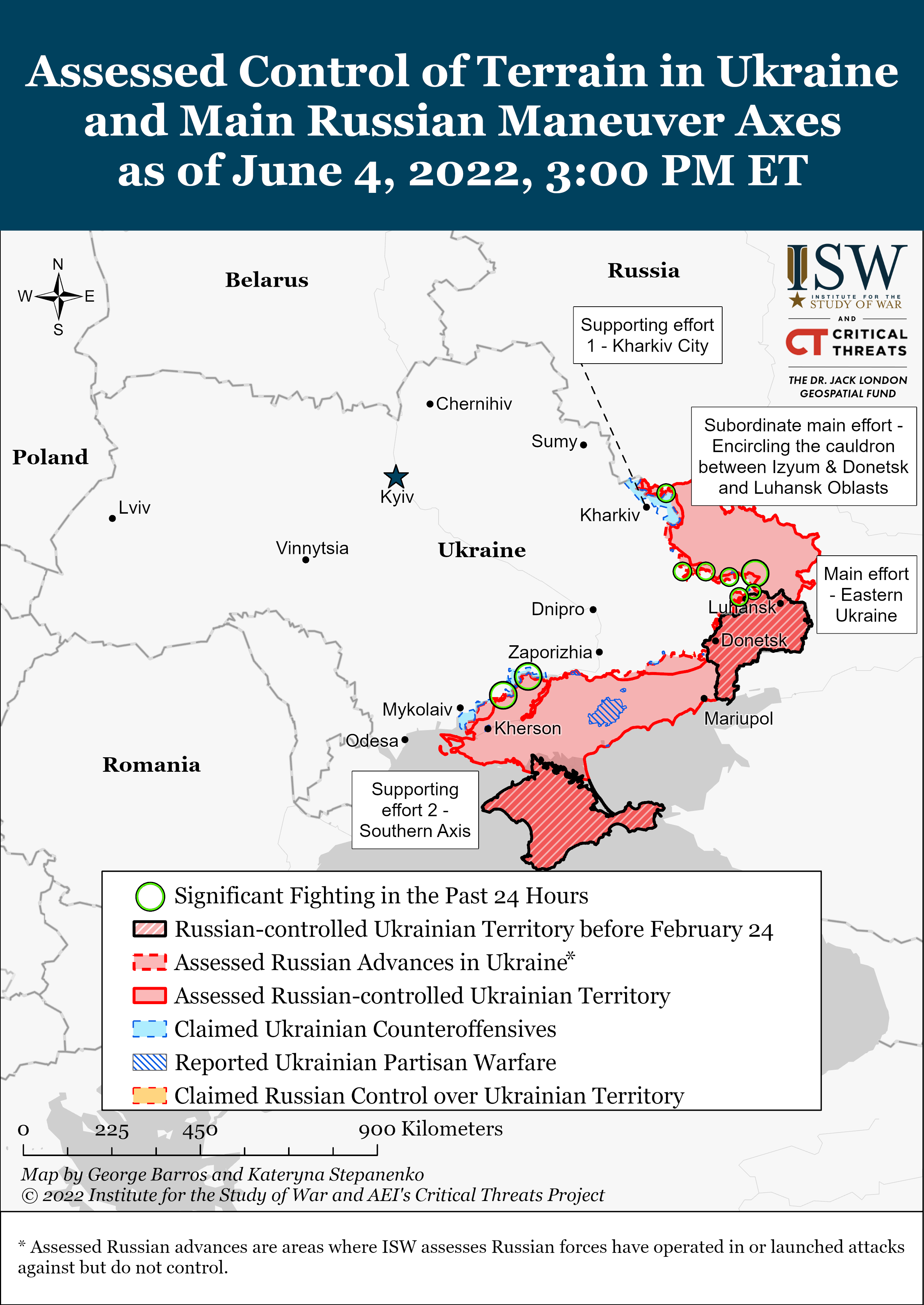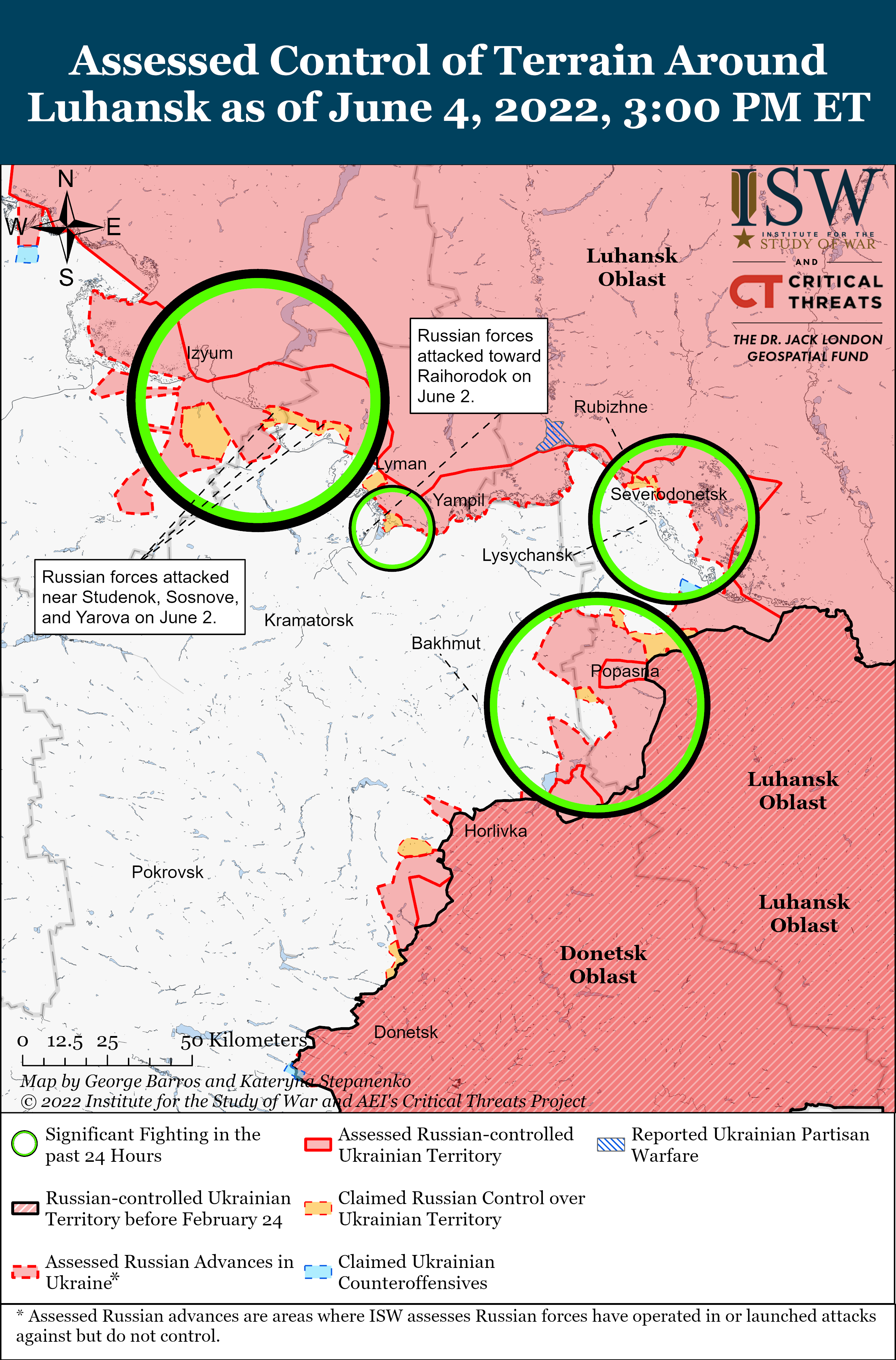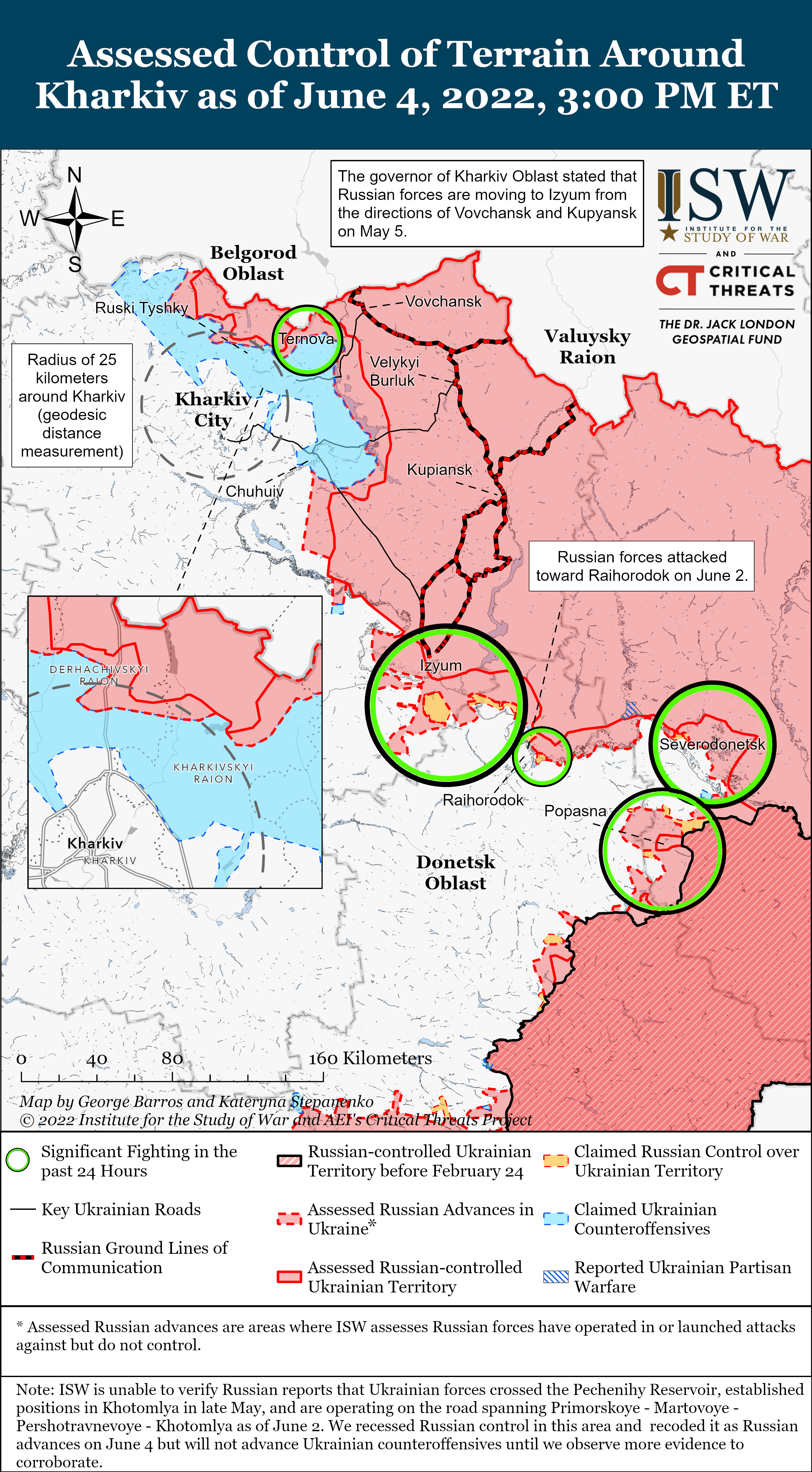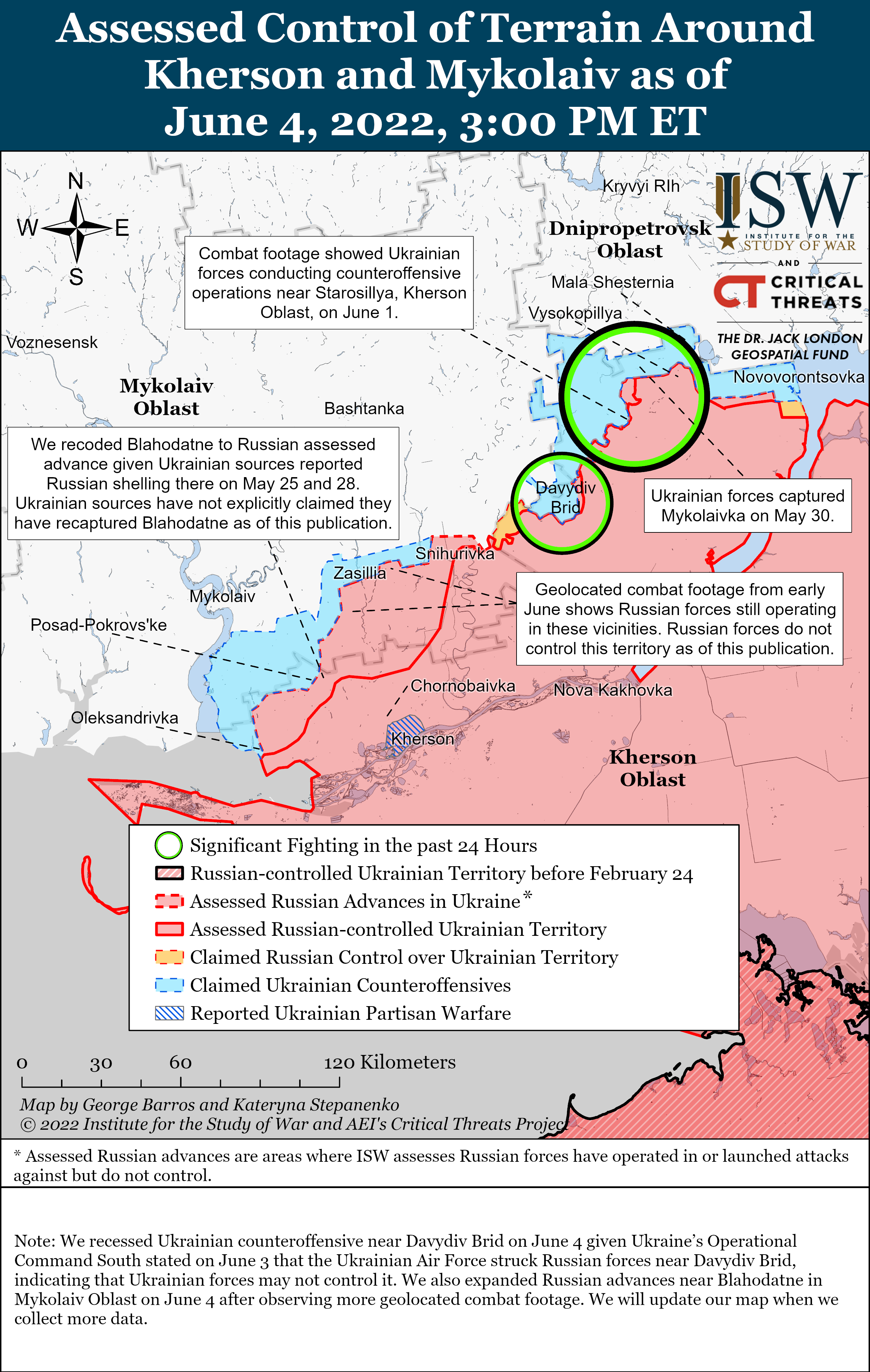SOURCE:
(P) TOM COOPER UKRAINE WAR:
(p) https://medium.com/@x_TomCooper_x/strategic-3e183f38eef3
(o) https://medium.com/@x_TomCooper_x/ukraine-war-30-31-may-1-june-2022-8c56d475a543
(h) https://medium.com/@x_TomCooper_x/ukraine-war-21-22-23-may-2022-585dddf58bf1
(g) https://medium.com/@x_TomCooper_x/ukraine-war-19-20-may-2022-58432b03f40
(f) https://medium.com/@x_TomCooper_x/ukraine-war-17-18-may-2022-a30378cfbd32
(e) https://medium.com/@x_TomCooper_x/ukraine-war-16-and-17-may-2022-2a79fc72e730 (d) https://medium.com/@x_TomCooper_x/ukraine-war-14-and-15-may-2022-9e9a89f694be (c) https://medium.com/@x_TomCooper_x/ukraine-12-may-2020-6fe4a31959b9 (b) https://medium.com/@x_TomCooper_x/ukraine-war-10-11-12-may-2022-cfd65b518a4d
(Q) RUSSIA & UKRAINE'S PROGRESSIVE DISPOSITIONS:
https://upload.wikimedia.org/wikipedia/commons/4/4f/2022_Russian_invasion_of_Ukraine.svg
(R) WAR ACTIVE ZONES LIVE ON MAP:
https://t.co/63fVbMXIWl
https://youtu.be/e3cRIOncXRw
ASSESSMENT
RUSSIAN OFFENSIVE CAMPAIGN, JUNE 4,2022
Kateryna Stepanenko, Mason Clark, and George Barros
June 4, 6:00 pm ET
Google URL below to open INTERACTIVE MAP
https://storymaps.arcgis.com/stories/36a7f6a6f5a9448496de641cf64bd375
Click here to see ISW's interactive map of the Russian invasion of Ukraine. This map is updated daily alongside the static maps present in this report.
Ukrainian forces are successfully slowing down Russian operations to encircle Ukrainian positions in Luhansk Oblast as well as Russian frontal assaults in Severodonetsk through prudent and effective local counterattacks in Severodonetsk and their defense of the western Siverskyi Donets riverbank. Ukrainian officials reported on June 3 that Ukrainian defenders pushed back against Russian advances in Severodonetsk and are actively hindering Russian advances on Lysychansk from the southwest.[1] Luhansk Oblast Administration Head Serhiy Haidai disagreed with the UK Defense Ministry forecast on June 3 that Russian forces will seize the remaining 10% of the oblast in the next two weeks, claiming that Ukrainian forces have enough reinforcements and equipment to conduct further counterattacks and defend their positions.[2] Haidai noted that Russian forces wrongfully believe in their own successes, enabling Ukrainian defenders to inflict high losses against unsuspecting Chechen units. Pro-Russian mil blogger Voenkor Kotyenok Z claimed that Russian forces are unlikely to break through Ukrainian defenses in Lysychansk from Severodonetsk (through continued frontal assaults and an opposed crossing of the Siverskyi Donetsk River) and will likely need to complete the drive from Popasna if they hope to capture Lysychansk.[3] Voenkor Kotyenok Z claimed that Ukrainian forces could prevent Russian river crossings from Severodonetsk and highlighted that Russian forces have not yet secured access to two key highways to Lysychansk.
The Ukrainian government and military are furthermore discussing the battle of Severodonetsk in increasingly confident terms and are likely successfully blunting the Russian military’s major commitment of reserves to the grinding battle for the city. While Russian forces may still be able to capture Severodonetsk and Lysychansk and Ukrainian forces are likely more degraded than Haidai’s statements imply, Ukrainian defenses remain strong in this pivotal theater. The Russian military has concentrated all of its available resources on this single battle to make only modest gains. The Ukrainian military contrarily retains the flexibility and confidence to not only conduct localized counterattacks elsewhere in Ukraine (such as north of Kherson) but conduct effective counterattacks into the teeth of Russian assaults in Severodonetsk that reportedly retook 20% of the city in the last 24 hours. The Ukrainian government’s confidence in directly stating its forces can hold Severodonetsk for more than two weeks and willingness to conduct local counterattacks, rather than strictly remaining on the defensive, is a marked shift from Ukrainian statements as recently as May 28 that Ukrainian forces might withdraw from Severodonetsk to avoid encirclement.[4]
Kremlin Spokesperson Dmitry Peskov reiterated on June 3 that Russia will continue its “special military operation” in Ukraine until Russia achieves all of its objectives.[5] Peskov noted that Russia has already “liberated” many settlements since the start of the operation. Kremlin officials have begun steadily returning to their original claims about the successes of the Russian invasion of Ukraine in contrast to previous statements in late May explaining the slow pace of the war.[6] Russian Defense Minister Sergey Shoigu also claimed on June 3 that Russian forces are adopting new unspecified tasks to accelerate the progress of the war.[7] The Kremlin is likely setting conditions to announce some sort of victory in eastern Ukraine while preparing for a protracted war. The Kremlin has not abandoned its maximalist political goals for Ukraine even though it has been forced to revise downward its immediate military objectives.
Key Takeaways
- Ukrainian forces conducted successful local counterattacks in Severodonetsk and Russian progress in direct assaults on the city and wider operations to encircle it remain slow. Ukrainian defenses in eastern Ukraine remain effective.
- Russian forces launched a series of unsuccessful offensive operations southwest of Izyum and in the Lyman area.
- Russian forces continued to defend previously occupied positions around Kharkiv City and launched missile and artillery strikes against Ukrainian defenders.
- Russian forces did not attempt to launch assaults on settlements in Kherson and Zaporizhia Oblast but continued to fire at Ukrainian positions throughout southern Ukraine.
- The Kremlin faces rising partisan activity in southern Ukraine despite Russian efforts to restrict movement and telecommunications access.
- Ukrainian officials are continuing negotiations for a prisoner exchange of the captured Mariupol defenders.
We do not report in detail on Russian war crimes because those activities are well-covered in Western media and do not directly affect the military operations we are assessing and forecasting. We will continue to evaluate and report on the effects of these criminal activities on the Ukrainian military and population and specifically on combat in Ukrainian urban areas. We utterly condemn these Russian violations of the laws of armed conflict, Geneva Conventions, and humanity even though we do not describe them in these reports.
ISW has updated its assessment of the four primary efforts Russian forces are engaged in at this time. We have stopped coverage of Mariupol as a separate effort since the city’s fall. We had added a new section on activities in Russian-occupied areas:
- Main effort—Eastern Ukraine (comprised of one subordinate and three supporting efforts);
- Subordinate main effort- Encirclement of Ukrainian troops in the cauldron between Izyum and Donetsk and Luhansk Oblasts
- Supporting effort 1—Kharkiv City;
- Supporting effort 2—Southern axis;
- Activities in Russian-occupied areas
Main Effort—Eastern Ukraine
Subordinate Main Effort—Southern Kharkiv, Donetsk, Luhansk Oblasts (Russian objective: Encircle Ukrainian forces in Eastern Ukraine and capture the entirety of Donetsk and Luhansk Oblasts, the claimed territory of Russia’s proxies in Donbas)
Russian forces carried out limited assault operations southeast of Izyum and near Barvinokove (southwest of Izyum) but did not make any territorial gains on June 4. Kharkiv Oblast Administration Head Oleg Synegubov reported that Russian forces unsuccessfully attempted to seize Virnopillya, approximately 20km southwest of Izyum.[8] Russian forces continued to launch unsuccessful assaults on Bohorodychne in a likely attempt to link up with units attempting to seize Sviatohirsk from the east—two settlements approximately 25km southeast of Izyum.[9] The Ukrainian General Staff reported that Russian forces continued to shell Sviatohirsk and its surroundings.[10] Ukrainian officials reported that Russian artillery fire started a fire that destroyed the Sviatohirsk Lavra (monastery) of the Moscow Patriarchate, but ISW cannot independently verify this claim.[11] The Russian Defense Ministry blamed the fire on Ukrainian forces and claimed that Russian forces did not launch assaults on Sviatohirsk.[12] Russian Telegram channels claimed that Russian forces seized Sosnove just north of Sviatohirsk and Brusivka, approximately 9km southwest of Lyman.[13] The Ukrainian General Staff reported that Russian forces are still attempting to secure the eastern bank of the Siverskyi Donets River in Staryi Karavan, approximately 1km northeast of Brusivka.[14]
Ukrainian and Russian sources confirmed that Ukrainian forces conducted a successful counterattack in Severodonetsk on June 3. Luhansk Oblast Administration Head Serhiy Haidai reported that Ukrainian forces recaptured 20% of Severodonetsk from Russian forces and inflicted significant casualties against Chechen units.[15] Some Russian milbloggers reported that Chechen units likely thought that they had successfully secured Severodonetsk and were unprepared for the counterattack.[16] The Russian Defense Ministry did not comment on the counterattack and falsely claimed that Ukrainian units are retreating to Lysychansk due to high losses of up to 90% of personnel.[17] The Ukrainian General Staff reported that Russian forces continued street fights in Severodonetsk and reinforced their units with reserves mobilized from the Luhansk People’s Republic’s (LNR) 2nd Army Corps on June 4.[18] Haidai reported that Russian forces continued to target the remaining bridges in Severodonetsk to cut off Ukrainian logistics routes to Severodonetsk.[19] Russian forces also reportedly launched an unsuccessful offensive operation on Ustynivka, approximately 16km southeast of Severodonetsk, likely in an effort to secure positions on the western Siverskyi Donets Riverbank.[20]
Ukrainian forces continued to repel Russian offensive operations around Popasna and defended Ukrainian ground lines of communication (GLOCs) between Bakhmut and Lysychansk.[21] The Ukrainian General Staff reported that Russian forces launched missile and air strikes on settlements in Bakhmut’s vicinity.[22] Russian forces also reportedly performed demonstrative actions to distract Ukrainian defenders in the Avdiivka area but did not launch assaults in western Donetsk Oblast.[23] The UK Defense Ministry reported that Russian forces have improved their combined use of air and artillery strikes in Donbas compared to the first two months of the war.[24] Russian mil blogger and Donetsk People’s Republic (DNR) serviceman Maksim Fomin (Vladelen TatarZkiy) claimed that Russian infantry is still unable to successfully maneuver because Russian forces have not fully suppressed Ukrainian artillery.[25] Fomin added that Russian forces struggle to locate Ukrainian artillery due to a lack of necessary equipment (such as radar and drones) and poor communication between Russian artillery and reconnaissance units.
Supporting Effort #1—Kharkiv City (Russian objective: Withdraw forces to the north and defend ground lines of communication (GLOCs) to Izyum)
Russian forces did not conduct offensive operations in the Kharkiv City direction and continued to defend their previously occupied positions on June 4. The Ukrainian General Staff reported that Russian forces continued to shell Ukrainian positions northeast of Kharkiv City and launched a missile strike on a transportation infrastructure facility near Mokhnach, approximately 36km southeast of the city.[26] Pro-Russian Telegram channel Rybar claimed that Ukrainian engineering elements reached Khotomlya, approximately 46km east of Kharkiv City and on the eastern bank of Pechenihy Reservoir, and are operating in the area, but have not regained full control over the territory.[27] Ukrainian officials and media sources have not shown any evidence that Ukrainian defenders crossed the Pechenihy Reservoir, but such an advance would threaten Russian ground lines of communication (GLOCs) in northern Kharkiv Oblast. The Ukrainian General Staff reported that Russian forces continued to deliver ammunition to front line units and withdrew up to 100 unspecified items of damaged military equipment via GLOCs in northern Kharkiv Oblast on June 4.[28]
Supporting Effort #2—Southern Axis (Objective: Defend Kherson and Zaporizhia Oblasts against Ukrainian counterattacks)
Russian forces continued to undertake defensive measures and conducted missile, air, and artillery strikes throughout southern Ukraine on June 4. The Zaporizhia Oblast Military Administration reported that small-scale fighting continued on the line of contact but that Russian forces did not conduct offensive operations.[29] Russian forces continued to generate forces in Vasylkivka, approximately 45km south of Zaporizhia City.[30] The Ukrainian General Staff reported that Russian forces fired at Ukrainian positions in central Zaporizhia Oblast and launched an airstrike on a Kamianske just north of Vasylkivka.[31] Russian forces launched missile strikes on Odesa and Mykolaiv Oblasts and continued to shell Mykolaiv City and Kherson Oblast.[32]
Activity in Russian-occupied areas (Russian objective: consolidate administrative control of occupied areas; set conditions for potential annexation into the Russian Federation or some other future political arrangement of Moscow’s choosing)
Russian President Vladimir Putin falsely denied that Russia is blocking Ukrainian seaports and inhibiting grain exports on June 3, despite Russian forces reportedly continuing to loot Ukrainian agribusiness.[33] Ukrainian Ambassador to Turkey Vasyl Bodnar reported that Russian forces are exporting stolen grain from Kherson Oblast to Turkey and other unspecified countries.[34]
Ukraine’s Security Service (SBU) reported that Ukrainian authorities are working with an unspecified international coalition to negotiate a prisoner exchange of the Mariupol defenders.[35] The SBU noted that the unspecified international coalition guaranteed the return of the Mariupol defenders, possibly implying that Russian and Ukrainian forces reached a conditional agreement upon the Ukrainian surrender of the Azovstal Steel Plant in Mariupol. The SBU added that the Red Cross bears the responsibility for all surrendered Mariupol defenders. The SBU noted that the Kremlin seeks to put Mariupol defenders on a demonstrative trial but did not specify how Russian sentencing could impact the prisoner exchange. Russian sources claimed that Ukrainian and Russian forces evenly exchanged bodies of deceased servicemen on June 4.[36]
Russian occupation authorities are unable to entirely suppress Ukrainian partisan activity, despite ongoing efforts to restrict movement and telecommunications in occupied territories. Mariupol Mayor’s Advisor Petro Andryushenko claimed that Donetsk People’s Republic (DNR) officials agreed to strengthen filtration processes and restrict civilian movement between districts in Mariupol due to growing dissatisfaction among remaining residents and persistent information leaks to the Ukrainian authorities.[37] The Ukrainian General Staff reported that Russian occupation authorities in Kherson Oblast enhanced their security and began wearing bulletproof vests and driving in armored vehicles due to Ukrainian resistance.[38] Some Ukrainian partisans have reportedly started offering payments in cryptocurrency for the destruction of Russian military equipment.[39]
References
[1] https://www.facebook.com/GeneralStaff.ua/posts/332187685760983;
https://t.me/luhanskaVTSA/3161;
https://t.me/luhanskaVTSA/3159;
https://t.me/luhanskaVTSA/3149;
https://twitter.com/Militarylandnet/status/1533018778644119553;
[2] https://twitter.com/DefenceHQ/status/1532600250841669632;
https://t.me/luhanskaVTSA/3149
[3] https://t.me/voenkorKotenok/37045
[4] https://www.understandingwar.org/backgrounder/russian-offensive-campaign....
[5] https://tass dot ru/politika/14813615
[6] https://understandingwar.org/backgrounder/russian-offensive-campaign-ass...
[7] https://understandingwar.org/backgrounder/russian-offensive-campaign-ass...
[8] https://t.me/synegubov/3383
[9] https://t.me/synegubov/3383
[10] https://www.facebook.com/GeneralStaff.ua/posts/332591192387299
[11] https://twitter.com/UKRinOSCE/status/1533046245287247873
[12] https://t.me/mod_russia/16462
[13] https://t.me/rlz_the_kraken/50403;
https://t.me/boris_rozhin/52103; https://t.me/swodki/109751;
[14] https://www.facebook.com/GeneralStaff.ua/posts/332187685760983
[15] https://t.me/luhanskaVTSA/3161
[16] https://t.me/voenkorKotenok/37045;
https://t.me/m0sc0wcalling/6616; https://t.me/strelkovii/2647
[17] https://t.me/mod_russia/16466
[18] https://www.facebook.com/GeneralStaff.ua/posts/332187685760983
[19] https://t.me/luhanskaVTSA/3161
[20] https://t.me/luhanskaVTSA/3159
[21] https://t.me/luhanskaVTSA/3161;
https://t.me/luhanskaVTSA/3149;
https://www.facebook.com/GeneralStaff.ua/posts/332187685760983
[22] https://www.facebook.com/GeneralStaff.ua/posts/332591192387299
[23] https://www.facebook.com/GeneralStaff.ua/posts/332187685760983
[24] https://twitter.com/DefenceHQ/status/1532979813048360961
[25] https://t.me/vladlentatarsky/14105;
https://t.me/vysokygovorit/8248
[26] https://www.facebook.com/GeneralStaff.ua/posts/332187685760983;
[27] https://t.me/rybar/33544;
https://argumenti ru/army/2022/06/774799
[28] https://www.facebook.com/GeneralStaff.ua/posts/332187685760983
[29] https://t.me/zoda_gov_ua/8650
[30] https://t.me/zoda_gov_ua/8650
[31] https://www.facebook.com/GeneralStaff.ua/posts/332591192387299
[32] https://t.me/Bratchuk_Sergey/13315;
https://t.me/Bratchuk_Sergey/13314;
https://t.me/Bratchuk_Sergey/13340;
https://t.me/rlz_the_kraken/50412;
https://www.facebook.com/GeneralStaff.ua/posts/332187685760983
[33] https://smotrim dot ru/video/2420860?utm_source=internal&utm_medium=main&utm_campaign=main-promo
[34] https://suspilne dot media/246460-posol-ukraini-zaklikav-tureccinu-poasniti-comu-v-krainu-vivoza
[35] https://t.me/mariupolnow/12587
[36] https://t.me/voenkorKotenok/37035
[37] https://t.me/andriyshTime/1269
[38] https://www.facebook.com/GeneralStaff.ua/posts/332187685760983
[39] https://sprotyv.mod.gov dot ua/2022/06/04/4303/




